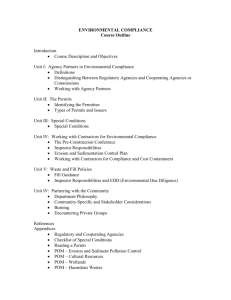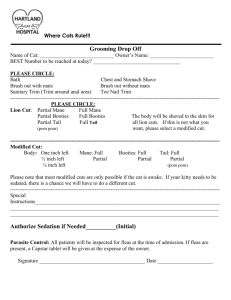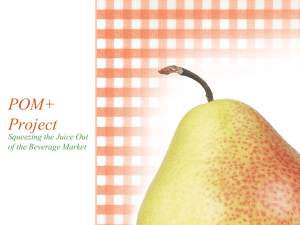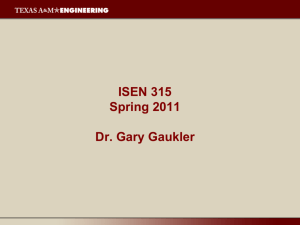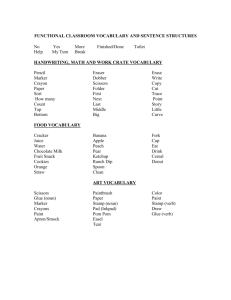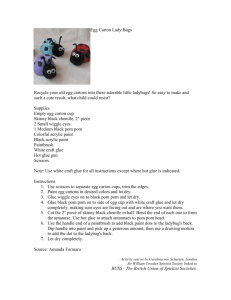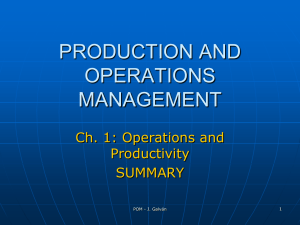Presentation
advertisement
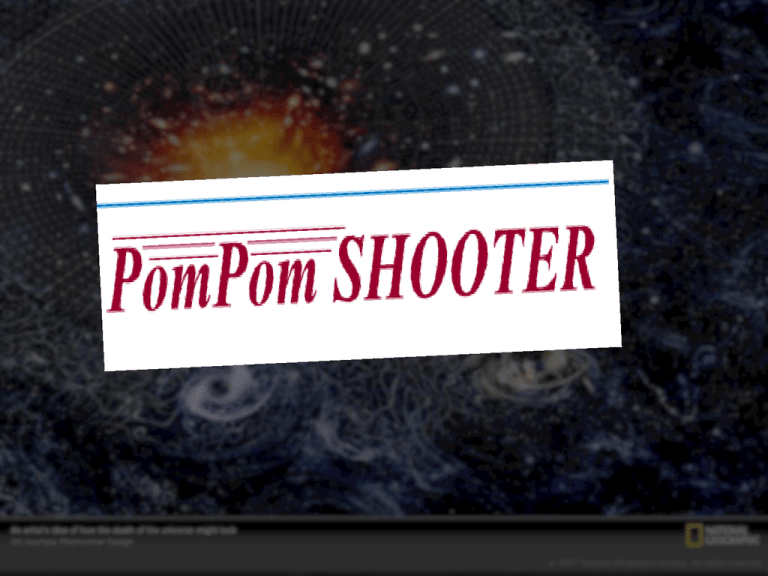
Fundamental Five [Sean Cain, Mike Laird] Small Group Purposeful Talk Frame the lesson Teach in the Power Zone Critical Writing Praise And Encourage ment Objective Product Teacher Language • TAKS Objective 4 – The student will demonstrate an understanding of motion, forces, and energy. • Lesson Objective: Students will implement a simple experiment to learn about testing variables while furthering their knowledge of pulmonary health. Scientific Processes - Scientific Inquiry: Field and Laboratory Investigations The student uses scientific methods during field and laboratory investigations. Scientific Processes - Scientific Inquiry: Field and Laboratory Investigations The student uses scientific methods during field and laboratory investigations. The student is expected to TEKS # •plan and implement descriptive and simple experimental investigations including asking well-defined questions,formulating testable hypotheses, andselecting and using equipment and technology. 5.2.A •collect information by observing and measuring. 5.2.B •analyze and interpret information to construct reasonable explanations from direct and indirect evidence. 5.2.C •communicate valid conclusions. •construct simple graphs, tables, maps, and charts using tools including computers to organize, examine, and evaluate information. 5.2.D 5.2.E Force & Motion TEKS Activity Objectives: Activity Description: Warning: Identify those students with asthma or other respiratory problems. They should not perform the breathing exercises in this activity because they involve repeated maximal inhalations and exhalations and use of a breathing restriction mouthpiece which could leave the students short of breath or, possibly, trigger an asthmatic episode. These students can observe and use data collected by their group. Place in the classroom where students can see the written objective and product Discuss the objective at the beginning of the lesson Make sure it is reasonable to complete the objective in one daily lesson or class The objective needs to be “kid friendly” language The objective must be specific enough to clarify the goal IDENTIFYING VARIABLES: In this activity, you will be conducting an experiment that includes variables. A variable is something that changes during the experiment. The independent variable in an experiment is chosen by the experimenter and is manipulated or changed by the experimenter. The dependent variable is not manipulated by the experimenter. It changes in response to the changes made to the independent variable. . EXAMPLE: I will do an experiment where I change a variable and observe and measure what happens because of the change. Completed by every student Done at the end of the lesson A final check for understanding Looked at daily by the teacher to guide future instruction Likely to increase the opportunity for a student to retain important learning Proof for the teacher that learning has occurred Create a Product Brainstorm a product that moves students to higher level of cognition by increasing the rigor between the objective, closing question, product, or task. • MOST effective position to conduct your craft. • Simply teaching or monitoring in close proximity. • IF you engage in this practice EVERY other instructional practice you use is enhanced & more powerful. • EXPECTATION 75% or more of your class time spent in THE POWER ZONE • • • • On task behaviors increase, discipline issues decrease, student retention of content increases. Proximity for behavior management Teachers in the middle of the action, can immediately respond to student changes in behavior or performance. • Reinforce positive behaviors, extinguish negative behaviors before fires arise. • BEST position to conduct frequent and on-going formative assessments and micro adjust instruction. Ask Questions • What is asthma? • How does it effect people who have it? • How can we use air to design an experiment to show force and motion? Research: Build Background Knowledge • Pulmonary disorders are classified into two main categories: obstructive and restrictive. • Obstructive disorders represent those in which the flow of air is impeded or blocked • Restrictive disorders are those in which the volume of air is reduced. Asthma During an asthma attack, it is harder and takes much longer to breathe out (expire or exhale) than to breathe in (inspire or inhale). Since it is so hard to breathe out during an asthma attack, more and more air gets trapped inside the lungs - making it feel like you can't breathe in or out! • Every 10-15 mins of teacher lead discussion or at completion of major concept--teacher stops and briefly (30secs-3 mins) • have students discuss a seed question related to learning outcome. • Key--focused, micro-discussion (NOT PLAYTIME) Turn The Question into a Hypothesis • START WITH AN IF, THEN STATEMENT: If the flow of air by restriction is reduced, then the force of air will be less. Turn that into a testable statement: • Example: Reducing the flow of air in a blow gun will cause the projectile’s flight to decrease in distance. Primacy/Recency Effect 1880's research(Ebbinghaus)--in a learning episode we tend to remember BEST which comes first, 2nd best second, etc. Remember LEAST anything after the middle of the learning episode. Problem-MOST teachers have 1 start & 1 finish Brain DOESN'T track time(class periods), it tracks state changes. - Change in physical or mental state! - Multiple changes= multiple starts/finishes - Multiple vibrant learning throughout class! • Typical adult attention span= 10-15 mins • Typical teenager 8-10 (Allen 2009, 31). Build Your Pom Pom Shooter! Materials Per shooter • • • • • • ▲● 4- 4” pieces of 1/2” PVC pipe ▲● 2 -2” pieces of 1/2” PVC pipe ▲● 1- 7” piece of 1/2” PVC pipe ●● 2 elbow connectors for 1/2“ PVC ●● 2 T connectors for 1/2” PVC ●● 3 end-caps for 1/2” PVC, drilled to restrict air flow Build Your Pom Pom Shooter! Get em Moving and Doing! • Load a pom pom to the front of the pom pom shooter (furthest from mouth) • predict how far the marshmallow will shoot • Try it Addresses both sides of the learning coin--Academic & Behavioral Why FOCUS: - Marzano (2001)-- use of effective reinforcement produced between a 20 to 48 percentile gain in student achievement! • MAKE Academic Success a REALLY BIG DEAL! • Praise OFTEN! • Not just the A students. - Student avg 71% on test now gets an 85% - More participation in class discussions - Struggling student turning in HW MORE. • Recognition at ANY level provides student with motivation to continue pursuit of academic success. • Students (especially At-Risk) can FINALLY see the connection between effort and reward. • Personalize it and be specific. Test It! • Load a pom pom to the front of the pom pom shooter (furthest from mouth) • Predict how far the marshmallow will shoot • Try it More Air = More Force • Load a pom pom to the back of the pom pom shooter (closest to mouth) • Predict how far the it will shoot • Try it Marshhmallow vs Pom Pom Mario and Luigi are arguing in the cafeteria. Mario says that if he flings a fire ball with a greater speed, then it will have a greater inertia. Luigi argues that inertia does not depend upon speed, but rather upon mass. Who do you agree with? Explain why. Answer Luigi is correct. Inertia is that quantity which depends solely upon mass. The more mass, the more inertia. Momentum is another quantity in Physics which depends on both mass AND speed. Momentum (p) is expressed as: mass X velocity Marshmallow vs Pom-Pom • Load marshmallow to the back of the pom pom shooter (closest to mouth) • Predict how far the marshmallow will go. • Try it. Variables • A variable is something that is changed • A constant, or control, is something that does not change Science experiments use… • Independent Variable: the one factor that is changed by the person doing the experiment • Dependent Variable: the factor which is measured in the experiment • Constants: all the factors that stay the same in an experiment Our Variables • Restriction of air flow • Mouth pieces with smaller holes Conduct the Investigation (Task Cards) Analyze the Data Graph the Data • Critical writing-writing for the purpose of organizing, clarifying, defending, refuting, analyzing, dissecting, connecting/ expanding on ideas & concepts. • "Results Now" M. Schmoker (2006). • Process of Putting focused thought on to paper. Not copying—That only turns entire classrooms in to slow-speed Xerox machines! Draw Conclusions Critical Writing Final Thoughts! Must progress come to an end – either in catastrophe or in some sort of completion – or is it unbounded? The answer is the latter.The philosopher John Locke wrote in 1689 that the mind is like ‘white paper’ on to which sensory experience writes, and that that is where all our knowledge of the physical world comes from. In reality scientific theories are not ‘derived’ from anything. Human minds create them by rearranging, combining, altering and adding to existing ideas with the intention of improving upon them. -David Deutsch, 2011, The Beginning of Infinity. Contact :bharri1neisd.net
